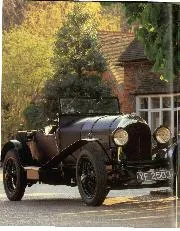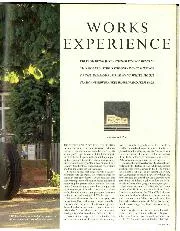At the end of 20 rounds the three Bentleys came in to lower hoods, fill up and change drivers. L. G. Callingham now took the big car, while S. C. H. Davis replaced Benj afield and George Duller took the wheel of d’Erlanger’s car. It was soon after this that there occurred the amazing smash which altered the whole complexion of the race. Tabourin, on one of the 2-litre Th. Schneiders, while taking an easy left-hand bend on the grand-stand stretch, ran into a wall on the left of the road, and ended up right across the road. He was followed into the bend by Callingham, who to avoid the Schneider took the right-hand ditch at 85 m.p.h. and stuck his Bentley. The next to arrive was Thelusson on one of the Fastos, who just managed to avoid both the other two cars. George Duller on No. 2 Bentley, however, was not so fortunate, for he too tried to take the ditch, hit No. 1 Bentley, knocked it out onto the road again, and ditched himself in his place. He was followed by Davis on No. 3 Bentley, who somehow sensed danger, and braked hard before the bend, but ‘could not avoid hitting No. 1 Bentley. The next two cars were two S.A.R.A.’s, one of which managed to find a path through the wrecks and the other was able to stop. The extraordinary thing is that in this amazing crash in which seven cars were involved, the only person who was at all seriously injured was Tabourin of the Th. Schneider. The position now was that Nos. 1 and 2 Bentleys were entirely wrecked, while No. 3 had a bent dumbiron, a front axle out of truth, a broken wheel and a shattered headlamp and wing. After work at the pits it was decided that No. 3 Bentley could continue, but when Dr. Benj afield took it over at midnight, the 3-litre Aries was six laps ahead. The Bentley, however, gradually overhauled it until at 2 o’clock on Sunday afternoon, two hours from the finish, it was only 3 mins. 27 sec. ahead. At this point the Aries quickened up, but before
3 o’clock it had to retire with a broken overhead camshaft drive. This robbed the race of a great deal of interest, as the Bentley then won very easily from the two little Salmson.s. Of the twenty-two starters, only nine finished. Of these, fourth place was gained by one of the 4-litre S.C.A.P.’s, driven by Desvaux and Vallon. An 1100 c.cE.H.P., driven by Bouriat and Bussienne was fifth, an air-cooled 4-cylinder S.A.R.A. of the same size driven by Maraudet and Lecureul was sixth, while seventh place was gained by the very attractive looking front-wheel drive 1100 c.c. Tracta driven by Gregoire and Lemesle. Of the failures, one of the Th. Schneiders and two of the Bentleys were elimated by the accident. The second Th. Schneider was withdrawn after the accident to
Tabourin, and the second E.H.P. lost its water before it was entitled by the rules to stop and fill up. Of the Aries team, the 3-litre car was put out as already mentioned by a broken camshaft drive, while the two 1100 c.c. cars, which had Gabriel and Duray, both of whom have been well-known since the early years of the century, among their drivers, went out engine trouble. One of the Fastos broke its crankshaft and the other its magneto platform. The third Salmson broke a valve, one of the S.A.R.A.’s broke its crankshaft, andthe other failed to maintain the minimum average.
The performance of the Salmsons in this race is very creditable, and their victory on formula for the Rudge-Whitworth cup was well-deserved.


